Write Us
We are just a call away
[ LET’S TALK AI ]
X
Discover AI-
Powered Solutions
Get ready to explore cutting-edge AI technologies that can transform your workflow!

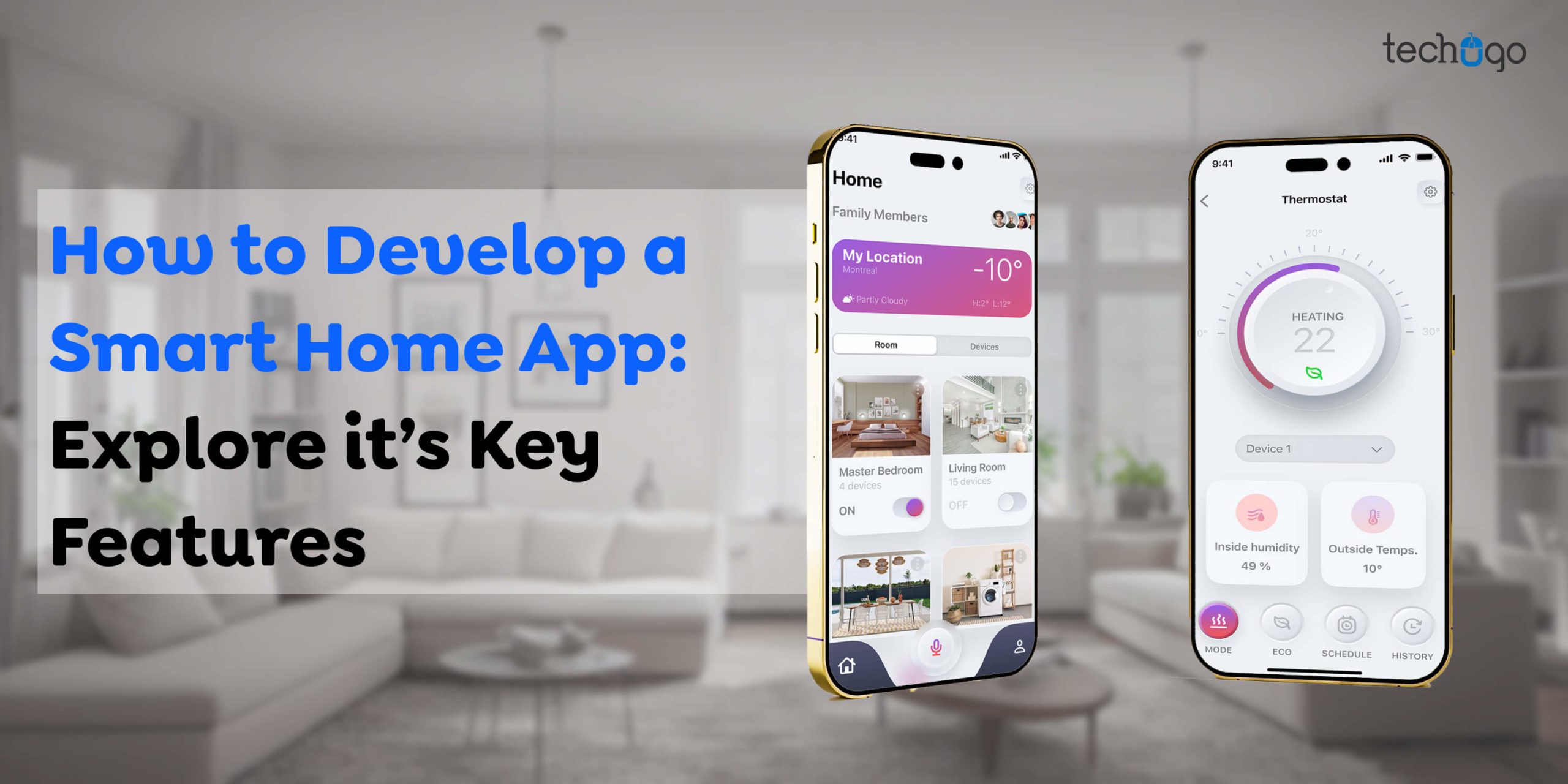
There’s a place where everyone seeks comfort, and that is their home. What can we do to improve our home’s comfort and invitingness? This article will address this question and discuss everything about smart home app development.
The smart home of the future is rapidly being viewed as one of the “things” to have. The ability is there to regulate virtually all aspects of your house. It includes entertainment systems, the lighting system, and the temperature. It also controls the temperature, the cooling, and the security of windows and doors. Isn’t that cool? In addition, you can keep an eye on the safety of your house.
In addition, you’re able to do everything you could imagine! Utilizing an intelligent home automation system can simplify your life. It does so by automating all the routine chores required on a daily basis.
They combine the latest technology with ease of use and convenience, putting you at your fingertips. With the market for smart homes expected to be worth $867.87 billion in 2030, demand for intelligent living spaces is growing. In this thorough guide, we’ll look at the expenses and the challenges of creating a smart-home application that resonates with your users.
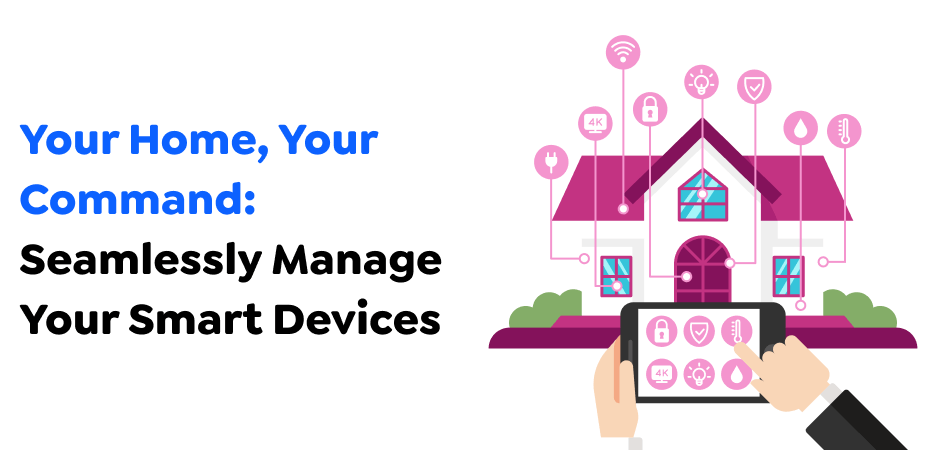
Smart home applications are software specifically developed to monitor and control different aspects of a smart home. They generally run on tablets, smartphones, and other mobile devices. Users can easily supervise and manage connected devices from afar. The apps allow homeowners to interact with their devices through a simple interface.
They will enable them to modify settings, receive timely push notifications, and automate routines or scenes of thermostats, lighting devices, security cameras, door locks, and appliances that connect to different devices. These applications can effectively control a broad array of smart gadgets. The smart home mobile apps provide an unwavering connection and facilitate seamless communications between smartphones, making the complete digital home experience simple and easy.
With smart home applications, users can perform a range of functions, like changing their thermostat’s temperature and turning the lights on or off, locking and unlocking doors, reading the feeds of security cameras, and also receiving alerts or notifications about events such as smoke alarms and motion detectors. Certain apps offer additional options like energy monitoring, schedulers, voice control integration, and integration with virtual assistants.
The smart home application is the central control center that manages an intelligent home’s various systems and devices. This app gives users remote access to multiple aspects of their house using smartphones or other compatible devices for better management. The functions of a smart home application comprise various key elements and procedures. This is a detailed explanation of the process:
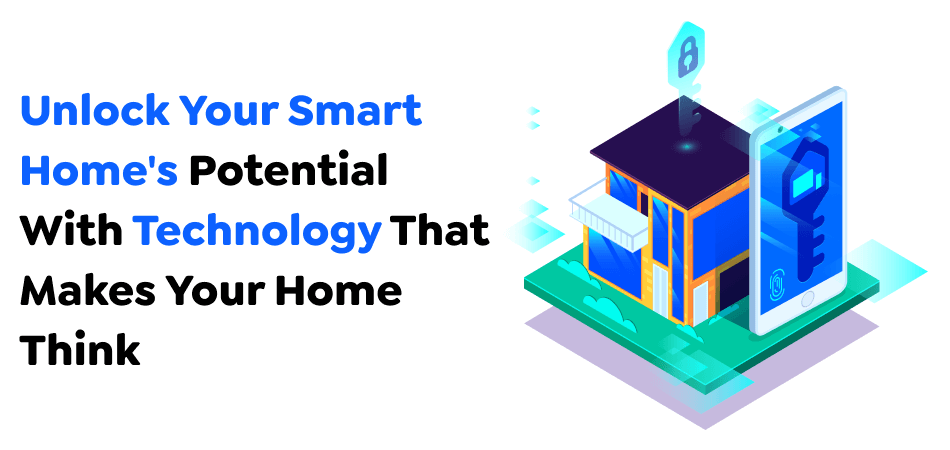
A smart home consists of various devices and sensors capable of connecting to a network and transmitting/receiving data. The devices include sensors for smart sensors, thermostats, light systems, door lock devices, appliances, and many more. Every gadget is fitted with sensors that gather data or respond to requests.
The smart home app connects with sensors and devices through a network using wireless techniques such as Wi-Fi, Bluetooth, and Zigbee. This allows the app to communicate commands to devices and receive information from them.
The app for smart homes runs on mobile devices like tablets or smartphones. It acts as the user’s interface, allowing homeowners to connect with their home automation devices. Provides an intuitive user interface for efficiently controlling various devices and settings.
For security and protection, the smart home application uses authorization and authentication mechanisms to ensure security. App users must usually sign up for an account and then sign in to the app using their login credentials. Verification confirms users’ identities and grants access to smart home devices and settings.
Once a user has set up a new smart home gadget, this app assists in pairing and discovery. It scans the internet for compatible devices and creates an association between the device and the app. This process of pairing could require complying with the specific directions provided by the maker, like using buttons or scanning QR codes.
After the devices have been connected, the app for smart homes collects data from many sensors. These include temperatures, motion sensors, energy consumption, and more. Furthermore, the app analyses the information gathered to provide insight and automatization features.
This app gives users access to manage all their devices through its interface. It lets users turn off or on lights, adjust thermostat settings, unlock and lock doors, and even stop and start appliances, among various other functions. The app also lets users create automated routines and scenarios by defining rules and triggers. For example, one can make a rule to switch off the lights whenever there is no activity during a specific time.
One of the main characteristics of a smart house application is remote accessibility. This allows homeowners to manage their smart devices when they are far from home. As long as the device has an internet connection, they can access their home’s smart app to take desired actions from a distance.
Many smart home applications incorporate popular voice assistants such as Amazon Alexa or Google Assistant. This allows users to operate their smart devices with voice commands, making them much more comfortable and non-hands-free.
Smart home app developers frequently update their apps to enhance capabilities, introduce new features, and address security weaknesses. It is essential to keep your smart home apps up to date to enjoy the most recent enhancements and ensure an uninterrupted and secure user experience.
The consensus is that software on smartphones that manages the smart home’s appliances and can automate a home is known as a smart home application. The specific application and the kind of device that supports the smart home application include the following standard features:
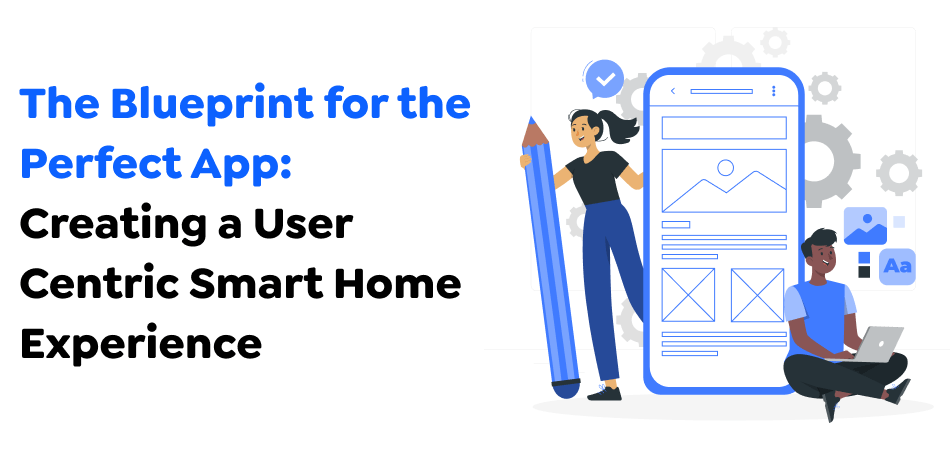
An element in an item’s design or performance that makes it easy and accessible for users to understand and utilize is a feature that makes it easy for users. It improves user experience and reduces confusion, irritation, and extensive instruction requirements. Smart Home app development involves working with a skilled UX/UI team that knows how to create smart home apps specifically.
Users must adjust to new apps and learn how to utilize their apps. The app must have specific onboarding instructions to follow so that the user can adapt to the app’s user and quickly connect and configure their device. The setup is not complicated. However, according to the device model, it may be difficult for the user without initial instructions.
It allows seamless interaction between different gadgets. Device integration can be crucial to the growth of smart homes. It will enable users to handle and control many devices using one user interface, making it simpler for people to run their residences from a single device hub.
Facial recognition is a common feature for smart home applications to ensure security. The feature lets the user control home appliances solely, binds one person’s management rights, and assists in guarding against intruders. If there is an attack, the application will notify the owner about any activity outside or inside the home.
Two essential elements, monitoring, and smart reports, enhance the utility and usefulness of home automation software. These elements are crucial as they enhance the programs used by smart homes’ functionality and user-friendliness.
Voice control is an excellent feature of smart homes. The home security system’s voice control system is smart and intelligent, allowing users to access various functional vocal control options. Virtual assistants like Amazon Alexa or Google Assistant can control multiple smart home applications.
The central component of a modern house is the control via a remote smart home hub or control for home automation. With the application, homeowners will be able to manage their home’s smart appliances directly using tablets or smartphones.
The users should be able to track and monitor their energy consumption using an application. The features for monitoring energy consumption usually include suggestions on saving power consumption by analyzing the energy use from various appliances.
The most important feature of smart home apps is security. They should offer security functions, including remote video surveillance, detection of abnormal behavior, and notifications. Additional features can be added, like locking the door and remote unlocking.
Smart homes should be able to automate, program, and schedule different household chores. Automatization allows for an efficient and more practical lifestyle. It also allows intelligent communication and the collaboration of gadgets and systems.
The latest computing technology analyzes the user’s behavior, preferences, and usage trends. Therefore, the analysis of usage data is vital. These apps typically analyze users’ patterns, allowing automated setting-up of lighting, heating, and so on. Additionally, analytics help detect inconsistencies and notify homeowners of any suspicious activity. Smart home companies use AI and ML to collect and analyze sensor data, as it’s a fantastic and contemporary solution to make the data useful.
Permission granted to users is ideal because it permits users to control the degree of access residents can have to their home automation system. By restricting access to information and gadgets inside their smart homes to only authorized users, users can control the privacy and security of their residences.
Smart home applications should include advanced scheduling algorithms to set times and schedules on your gadgets. This is especially useful to those who want to focus on energy efficiency. By using advanced schedulers, you can set your smart devices to switch off or on automatically according to predefined schedules.
Alerts are vital to many users; however, in most situations, users ignore them. This is why Smart home applications should permit users to modify the alerts they receive.
Also Read – Get Your Customers Back to Action With These Push Notification Trends
Smart homes have door locks that require the homeowner to take a fingerprint. Therefore, in addition to facial recognition or password security, biometric entry should be integrated into the application to provide better protection.
A smart home app that communicates alongside other devices is essential to development. It was well-designed and integrated if the app functions on specific devices and platforms.
Smart speakers, audio streaming services, and home security are examples of intelligent home appliances and products. They can all be combined with other solutions connected to home automation.
Developing an app for smart home automation requires a methodical plan to ensure success. The steps below will aid you in creating your application with greater precision and efficiency.
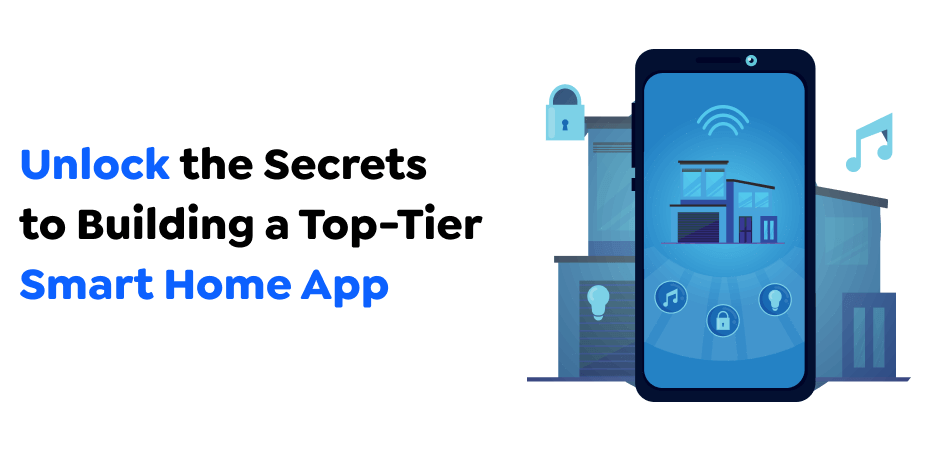
Before beginning the process of creating your home automation software, it is essential to determine and identify the functions you’d like to add. Create a list of the functions you would like the app to include, including basic ones such as switching off and on lights and more sophisticated ones. These can include regulating temperatures, controlling the home security cameras, or unlocking doors.
It is possible to develop a standalone application that users download and install on their mobiles or tablets. You could also opt to build a web-based program that is accessible via the internet using a browser. When selecting your option along with Android app development solutions, be aware of factors such as accessibility, scalability, and security.
For the app for smart home automation to work effectively, it needs a solid and secure backend system. Many aspects must be taken into consideration, including data storage and processing and API integration. It is important to collaborate with an experienced mobile app development company in USA that can assist you in creating a scalable, secure, and reliable structure for your app.
A simple and easy-to-use UX and UI are essential to the success of your home automation application. Be aware that your customers will likely interact using your app across various gadgets, and you’ll have to ensure that your app is adaptable and flexible to different screen sizes.
Agile methodologies are a well-known method of software development that encourages continuous iteration and rapid prototyping. Using agile technology allows you to develop apps with more speed and lower cost. This method involves less development time and more rigorous tests to verify your app’s functions.
Regular tests throughout the development process are essential to verify that all functions are operating efficiently and there are no security flaws present. Use skilled testers to help you find and resolve any problems before the app is released.
After your home automation app has been launched and you’re ready to go, offer users continuous improvements and updates. It could include introducing new features, repairing bugs, and ensuring your application is compatible with the latest technology and devices as they’re launched.
The cost of building a smart home app depends on the features you want to include in the application. Costs can be as low as $15,000-$500,000 and even higher for the development of an application. It will increase if a customer wants advanced features included within the application. If you’re concentrating on an individual user, you can examine the cost for engineers per hour. The pay per hour for app developers varies between $50 and $150. This depends on the kind of developer, the location, the sophistication of the app, and the business model.
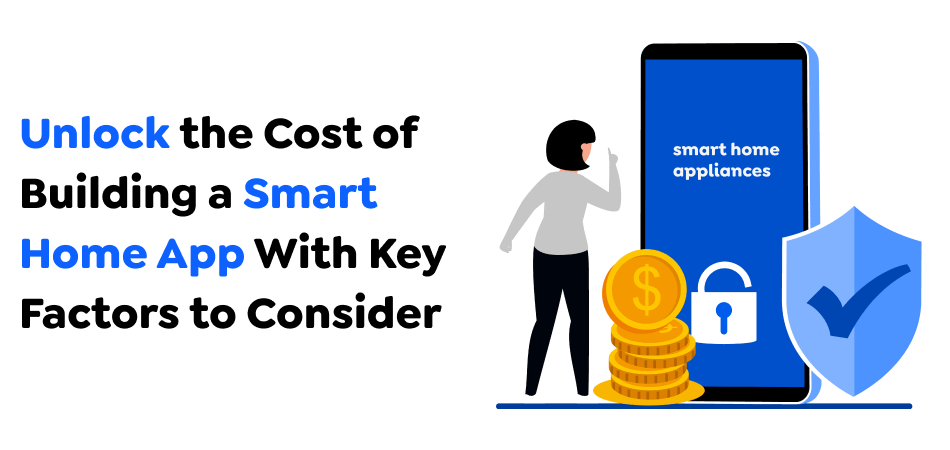
Below are the factors influencing the cost of smart home apps:
Suppose you want to create a smart application for home automation. In that case, professionals must research the gadgets that will be utilized. If they are not appropriately managed and categorized, even in terms of the number of devices, they could become an obstacle in customizing the development of smart home apps. Most smart home devices connect through the same central device like tablets or smartphones. They typically connect to cameras, door locks, monitors, computers, and televisions. So, coordinating the amount of devices is crucial to ensure the software can function correctly.
Third-party integrations can help develop an app for the smart home. Many third-party apps and services can connect with various products inside homes through APIs, which gives homeowners better services and allows developers to create quicker and more cost-effective designs.
Smart home applications requiring user interfaces require being compatible with various operating systems; their costs depend on whether or not these can work as intended. While iOS and Android differ in their features, both provide a lot of connectivity for smartphones, gadgets, and other devices.
The level of complexity of the UI and UX design directly affects the development cost. The visually pleasing and easy-to-use interface could require more effort in design and development, resulting in more expensive costs. A lot of customization, animations, and unique interactive features could also result in increased costs for development.
Another factor that could influence the price of a smart home app is the equipment that is installed. Thermostats or smoke detectors, among others, could affect the cost of app creation. In general, the more complicated functions you’ll have to incorporate in your app, the more you’ll have to spend to create it.
The number of individuals working on designing a home automation program is vital. The essential skills to consider are project manager, UI/UX expert, frontend, backend embedded, and software engineer. Furthermore, a QA engineer must be included in the work. Other roles that could be required include business analyst, hardware engineer, and DevOps specialist.
The price of creating the smart home app also depends on the developers’ experience and knowledge. This increases the cost, an essential factor in the total cost of smart home application development.
As we have previously mentioned, the amount of features available can influence the effectiveness of an app for smart homes. The number of features added to the development of home automation will affect how it functions. The software should only contain essential features to run simultaneously across multiple gadgets.
Smart architecture is described as a combination of active and passive technical and architectural strategies. Smart homes use IoT and computer technology and manage and control these by connecting various systems and devices. This is why the design of smart home applications is vital, but the level of complexity should be considered. The level of complexity in a smart home app’s architecture will affect the app’s development price.
Suppose you are considering developing smart home apps. In that case, it is crucial to consider the costs associated with maintenance and updates over time. Since technology is constantly evolving, periodic updates are required to improve functionality, strengthen security, and, in turn, ensure compatibility with new technology and devices.
In addition, setting aside an annual budget for app maintenance and updates is vital for ensuring a seamless and consistent user experience. Thus, by planning and preparing for such expenses, you’ll be sure to provide an effortless and current smart home application that meets your customers’ changing requirements.
In the face of the growing need for applications to control homes, Developers face the following challenges:
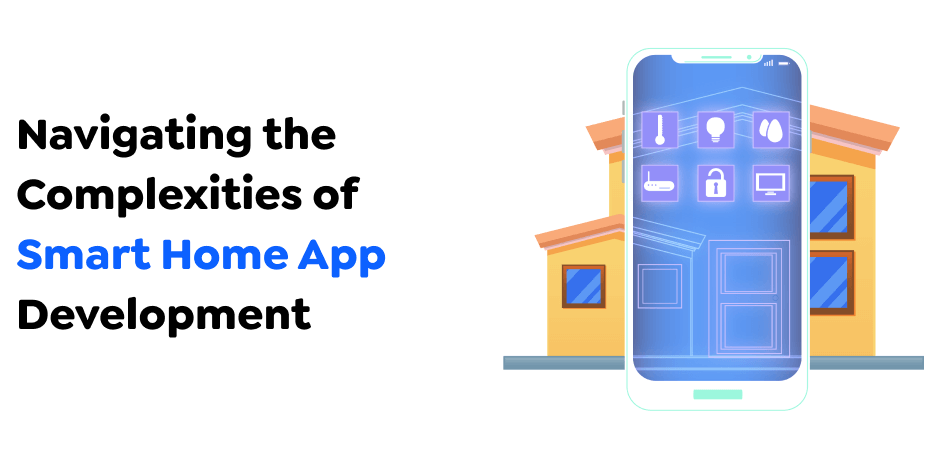
According to the research, at least one connected device is vulnerable within 40.8 percent of the world’s smart homes, placing all of the systems in danger. Therefore, developers should ensure that security features protect their apps. To ensure security, app developers should use encryption technologies to safeguard users’ personal information. It is essential to incorporate authenticating protocols that ensure only authorized users can use the application. This helps block any unauthorized access and protects users’ privacy.
Smart homes typically have various devices that must connect. Yet, the different devices may not work with one another or with the application. This may cause functionality problems and lead users to uninstall your app. Additionally, they must cooperate with device manufacturers to ensure that their devices work with the application.
Interoperability capabilities allow devices to operate seamlessly, and connectivity options allow connectivity between devices and the application. For example, an app-enabled thermostat can connect to other devices within the home, such as smart lights and speakers.
Smart home automation applications must function properly to provide value to their customers. Developers should employ the most efficient optimization techniques to achieve the best performance. This includes optimizing codes, shrinking the size of apps, and limiting resource consumption. These methods make your app run seamlessly and won’t drain the device’s battery.

The realm of convenience, control, and ease will be available at your fingertips if you develop a home automation software that is smart. The development of smart home apps is a rapidly expanding and exciting area with tremendous possibilities for creating seamless, efficient personal user experiences for your home. The market for smart homes is growing and evolving in the coming years; keeping abreast of new techniques and industry standards is essential for app developers. They’ll then be able to develop creative and sustainable solutions.
The future is bright for smart home technology since more and more businesses have expressed enthusiasm for integrating IoT technology into their services. Therefore, smart home application technology has the potential to change the way we live in our areas. At the same time, we can utilize IoT technology, which is essential in implementing Internet of Things technology into daily lives.
Techugo, a seasoned leader in app development, is uniquely positioned to partner with you in smart home app development that redefines living spaces. Our expertise in IoT integration, coupled with a deep understanding of user experience, allows us to create modern solutions that are not only technologically advanced but also intuitive and user-centric. Let Techugo be your trusted partner in transforming your vision of a smart home into reality. Get in touch today to unleash your potential with smart home app development with us!
Write Us
sales@techugo.comOr fill this form